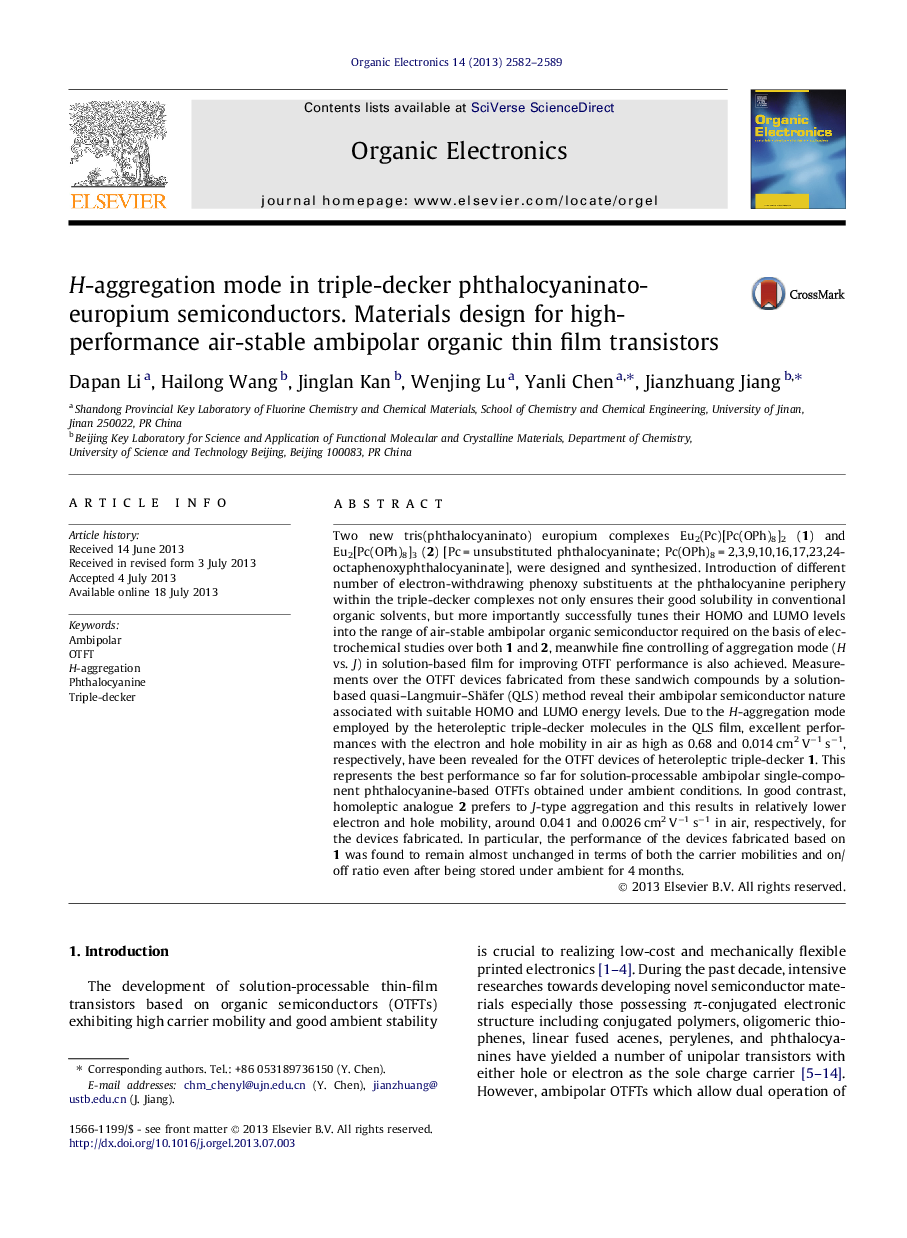| Article ID | Journal | Published Year | Pages | File Type |
|---|---|---|---|---|
| 1267303 | Organic Electronics | 2013 | 8 Pages |
•A new class of ambipolar organic semiconductors for high performance OTFTs.•Solution-processed films of new triple-decker phthalocyanines were used as active layer.•Controlling of aggregation mode (H vs. J) for improving OTFT performance is achieved.•Air-stable electron and hole mobilities of 0.68 and 0.014 cm2/Vs were obtained.
Two new tris(phthalocyaninato) europium complexes Eu2(Pc)[Pc(OPh)8]2 (1) and Eu2[Pc(OPh)8]3 (2) [Pc = unsubstituted phthalocyaninate; Pc(OPh)8 = 2,3,9,10,16,17,23,24-octaphenoxyphthalocyaninate], were designed and synthesized. Introduction of different number of electron-withdrawing phenoxy substituents at the phthalocyanine periphery within the triple-decker complexes not only ensures their good solubility in conventional organic solvents, but more importantly successfully tunes their HOMO and LUMO levels into the range of air-stable ambipolar organic semiconductor required on the basis of electrochemical studies over both 1 and 2, meanwhile fine controlling of aggregation mode (H vs. J) in solution-based film for improving OTFT performance is also achieved. Measurements over the OTFT devices fabricated from these sandwich compounds by a solution-based quasi–Langmuir–Shäfer (QLS) method reveal their ambipolar semiconductor nature associated with suitable HOMO and LUMO energy levels. Due to the H-aggregation mode employed by the heteroleptic triple-decker molecules in the QLS film, excellent performances with the electron and hole mobility in air as high as 0.68 and 0.014 cm2 V−1 s−1, respectively, have been revealed for the OTFT devices of heteroleptic triple-decker 1. This represents the best performance so far for solution-processable ambipolar single-component phthalocyanine-based OTFTs obtained under ambient conditions. In good contrast, homoleptic analogue 2 prefers to J-type aggregation and this results in relatively lower electron and hole mobility, around 0.041 and 0.0026 cm2 V−1 s−1 in air, respectively, for the devices fabricated. In particular, the performance of the devices fabricated based on 1 was found to remain almost unchanged in terms of both the carrier mobilities and on/off ratio even after being stored under ambient for 4 months.
Graphical abstractFigure optionsDownload full-size imageDownload as PowerPoint slide
